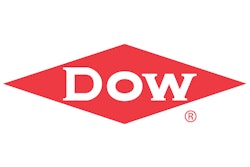Martin Spitzer, executive director of the PCSD, says President Clinton is expected to publish a new agenda for the Council this spring. Spitzer explains that the agenda will focus on insuring that industry takes the next steps toward creating "an environmental management system for the 21st Century." That agenda is sure to rely heavily on EPR, shorthand for the process in which a manufacturer gets together with upstream suppliers and downstream customers in an effort to lessen the environmental impact of a product's manufacturing, processing and disposal. One example was how S.C. Johnson & Son, Inc., Racine, WI, manufacturers of household cleaning products such as Pledge, enlisted steel can manufacturers and a waste recycling company in a campaign to convince cities and counties to include aerosol cans in their existing curbside recycling programs. Samuel Johnson, the company chairman, sits on the PCSD. President Clinton created the high-level, 24-member Council in 1993; since then, it has been developing its agenda, consisting of a wide-ranging group of environmental objectives that seek to combine natural resource conservation with economic growth. The Council is co-chaired by David Buzzelli, vice president and corporate director of The Dow Chemical Co., and Jonathan Lash, president of the World Resources Institute. The Council has been careful, up until now, to pursue actions that are voluntary. No one has spoken publicly about the need for new laws or regulations to force sustainable development on industry or anyone else. That voluntary approach has fit with the Clinton administration's first-term mindset, and has kept the PCSD below many people's radar. "I know they are out there, but don't know what they have been doing," notes Marla Donahue, vice president of public affairs for the Foodservice & Packaging Institute, Inc.
Life-cycle analysis gains political cachet
The President's Council on Sustainable Development (PCSD), having received a new lease on life, will be pushing ahead with its efforts to proselytize on behalf of "Extended Product Responsibility (EPR)," a concept that has numerous implications for users of packaging.
Mar 31, 1997
Companies in this article
Machinery Basics
Annual Outlook Report: Sustainability
The road ahead for CPGs in 2025 and beyond—Packaging World editors review key findings from a survey of 88 brand owners, CPG, and FMCG readers.
Download Now
Researched List: Engineering Services Firms
Looking for engineering services? Our curated list features 100+ companies specializing in civil, process, structural, and electrical engineering. Many also offer construction, design, and architecture services. Download to access company names, markets served, key services, contact information, and more!
Download Now
Downloads






















